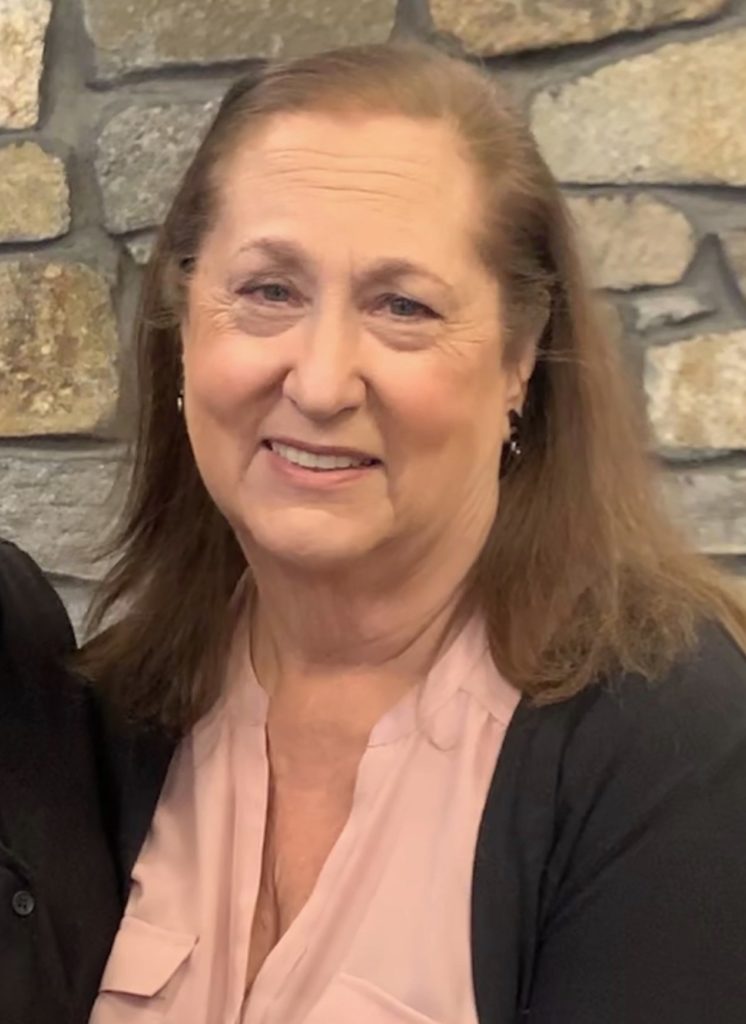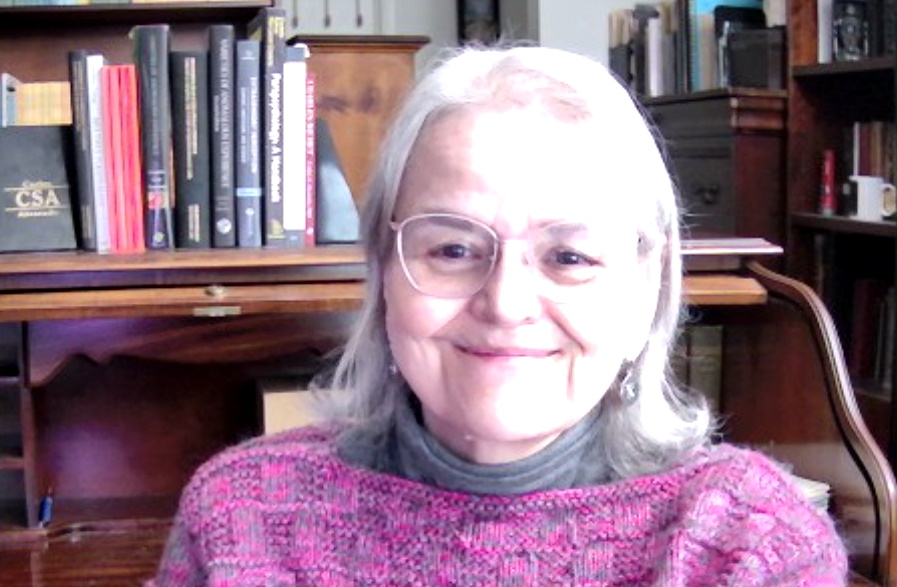From the desk of Lisette Coly

President of the Parapsychology Foundation
I am positively elated that the conveners of Women and Parapsychology Revisited, the special issue of the bilingual Journal of Anomalistics/Zeitschrift für Anomalistik (JAnom/ZfA),have seen fit to revisit the theme of PF’s 39th Annual International Conference held in Dublin in 1991 that was devoted to “Women and Parapsychology.” The conference was crafted to celebrate PF’s 40th anniversary, which I find incredible considering that PF is currently in its 71st year of operation.
The 1991 conference was dedicated to two exceptional women, our founders, Eileen J. Garrett and Frances P. Bolton, and had as participants many other exceptional women who have made substantial marks within the science of parapsychology. It is said that timing is everything, and, in hindsight, very regretfully, we seemed to have peaked too early for many who airily dismissed the fruits of an excellent conference as “just that woman thing.”
I can speak for my late mother, Eileen Coly, then President of PF, and our esteemed moderator, the late Rhea A. White, and I suspect our contributors, some of whom are presenting in this new incarnation, when we ask … What took so long? As my mother stated in her introduction, “Since Utrecht (the first of our conferences, in 1953), women have progressed to where they are now selected to participate on the merits of research done. True, the ratio of men to women has always been grossly unequal, reflecting the imbalance in the number of women researchers. This gap is starting to close. … We at the Foundation are optimistic about the role of women in parapsychology even if we chafe at the speed with which change is slowly taking place.” Rhea White then closed the conference by saying, “a seed has been planted and I hope that it will set forth roots and shoots in many directions … but this conference did establish one thing: something now has begun to grow within the ranks of parapsychologists.” Well, I am personally proud and gratified that indeed those seeds have borne fruit — big time — as will be evident to the attendees of the PA’s November 2022 event focused on the issue, and the December 2022 issue itself, that women nowadays take their place alongside men with no consideration of gender.
Finally! Let me turn you over to one of those “seeds,” Dr. Nancy L. Zingrone, who presented in Dublin and has done so much to assist students and researchers of any gender, whether binary or LGBTQIA+, to push the ball further down parapsychology’s court.
From the desk of Nan Zingrone

Parapsychology Foundation Research Fellow
In early October 2021, I heard from Dr. Gerhard Mayer, the Editor-in-Chief of ZfA, about his intention to devote the December 2022 issue of his journal to the topic of women and parapsychology. We had been corresponding about my late husband, Carlos S. Alvarado’s last published full-length article (Alvarado & Nahm, 2021), “Luminous Phenomena at Death: The Case of the Monk Family,” which was being prepared for publication in the ZfA by Michael Nahm. Gerhard had been talking with another colleague, Cedar S. Leverett, about the Paris PA convention in 2019 in which it was apparent that the presenters were still predominantly male. Gerhard suggested that an issue of the journal be dedicated to a more modern assessment of the place of women in the field and, in that project, honor and extend the work of the PF’s 1991 conference. He invited me to guest edit along with Cedar. She had been introduced to me through correspondence with Dr. Stanley Krippner some years before, had attended Carlos’s and my online course, now known as ParaMOOC, and we had kept up some correspondence. Of course, I was delighted at the prospect and accepted the offer.
As Lisette mentioned, in 1991, very few of the men in the field took the conference seriously. Gerd Hövelmann, Hans Michels, Marco Bischof, Sean O’Donnell, and Carlos were the only men active in and around the field who were listed as observers. Only Harvey Irwin acknowledged its importance in print. So many otherwise egalitarian male colleagues in the field dismissed the topic as a “women’s thing” that I was a bit demoralized about the situation. However, I was also so honored to have been asked not only to present at the conference but also to weigh in on the women who were invited to speak.
The conference was set up for a day of substantive papers and a day of position papers. The participants at the podium besides Mrs. Coly, Lisette Coly, and Rhea White were: Susan J. Blackmore (then at the Perceptual Systems Research Centre at the University of Bristol), Ruth-Inge Heinze (then at the Center for Southeast Asia Studies at the University of California-Berkeley), Anjum Khilji (then at the Foreign Service Institute in Virginia), Joanne D.S. McMahon (then at the Eileen J. Garrett Library of the Parapsychology Foundation), Beverly Rubrik (then at the Center for Frontier Sciences at Temple University), Marilyn J. Schlitz (then at the Mind Science Foundation), Jessica Utts (then in the Division of Statistics at the University of California-Davis), and myself (then a doctoral candidate in history at Duke University).
The topics covered at the conference and represented along with the discussions in the proceedings (Coly & White, 1994) were: the relevance of a feminist approach to science (White), social and institution influences on gender in science (Utts), the feminine archetype (Rubik), gender differences in belief (Blackmore), Eileen J. Garrett’s life and work (McMahon), women, power and the paranormal (Schlitz), Muslim women’s contributions to parapsychology (Khilji), life patterns of women parapsychologists (Heinz), and my presentation on the images of woman as medium using the examples of the writings of 19th-century cleric and author Frederick Marvin and the Italian criminologist Cesare Lombroso. The position papers addressed the general issue at hand (Heinze, Schlitz, and me), a contemporary look at Muslim women and the field (Khilji), women skeptics (Blackmore), the importance of feminine and feminist perspectives in the field (Rubik and White) and preparing for the future (Utts). Among the male observers, Gerd Hövelmann and Carlos Alvarado stood out in the discussions on both days.
From my invitation from Gerhard to join him and Cedar in planning the issue to today, our Zoom meetings have been frequent and our correspondence plentiful. Some months back, Cedar and I put together a wish list of women in the field whom we hoped to encourage to write invited papers and circulated a call for papers from anyone interested in participating. The invited authors who submitted a plan for their proposed papers are Fátima R. Machado (University of São Paulo), Caroline Watt (University of Edinburgh), Jessica Utts (University of California-Irvine) and Ina Schmied-Knittel (IGPP/Germany). Among those who answered the Call for Papers and whose abstracts were accepted are Renaud Evrard (University of Lorraine), Sonali Marwaha (Laboratories for Fundamental Research), Christine Simmonds-Moore (University of West Georgia), Jacob Glazier (University of West Georgia), and Renée Bedard (Western University, London, Ontario, Canada).
Gerhard, Cedar, and I are excited about the content of the December 2022 special issue of the ZfA as well as looking forward to the Parapsychological Association’s online symposium “Women and Parapsychology Revisited” which will take place on November 19th, 2022, to be chaired by Gerhard. As the PA’s announcement for this symposium notes, we are eager to “take another look at this topic and see if and what has changed” over the past 31 years. I know that I am hoping that our future will lean more towards gender equity in the field and that the strides we see in parapsychology and consciousness will continue.
References
Alvarado, C.S., & Nahm, M. (2021). Luminous phenomena at death: The case of the Monk family. Journal of Anomalistics, 21, 466-479.
Coly, L. & White, R.A. (1994). Women and parapsychology: Proceedings of an International Conference held in Dublin, Ireland, September 21-22, 1991. Parapsychology Foundation.